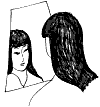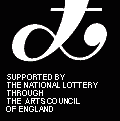SELF STUDY STUDENTS - Page 5

WRITE
Now write some haiku. You know enough now to get launched. Some suggestions:
» Write about some perception that has stuck in your memory as a vivid picture or a significant moment associated with a particular place.
» Go for a walk and observe the weather, the trees, the birds and anything else. Do it by yourself, with serious attention, taking care to look closely in the spirit of Master Basho. Make notes.
» Look at familiar little things through a magnifying glass: the movement of an insect or worm, earth, wood, the skin of your hand etc.
» Write a haiku structured on two smells, two sounds, or any combination of two sense impressions.
» See if you get an idea about a contrast of big and small, rising and falling, delicate and unyielding etc. Ė but donít try too hard! If it is not based on an observation or experience it will sound contrived.
Donít write about an idea or a thought. Donít use any abstract nouns. Keep it simple and concrete. Stick to accurate observations. You may use seventeen syllables exactly, or, as in many of the examples quoted in this lesson, fewer than seventeen syllables. Have fun!

REFLECT
Now share your haiku with some readers and ask them what they see. If they are confused, or see something quite different to what was in your mind, you need to revise the poem to achieve the effect you seek. If they respond enthusiastically, you have got an early hit!
CONCLUSION
For advice on organising re-drafting workshops click here.
You have now
» learned what the haiku is and about its special spirit,
» read a number of examples by Japanese masters of the form and some Western ones;
» studied some of the internal structure of poems, made interpretative judgements about them and
» written your first poems.
Congratulations.
LINKS
To see haiku poems written by young children after one introductory lesson like this one, click here.
Michael Gunton, Cicely Hill, James Norton and George Marsh are poets published by the Waning Moon Press. You have read some of their poems. The Basho translations, Koji translations and Dimitar Stefanov translations are by George Marsh (with collaborators) and are also published by Waning Moon. To look at the books, click here.
END OF LESSON
Page 1 | Page 2 | Page 3 | Page 4
to the top
|


